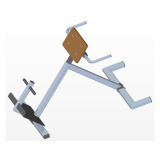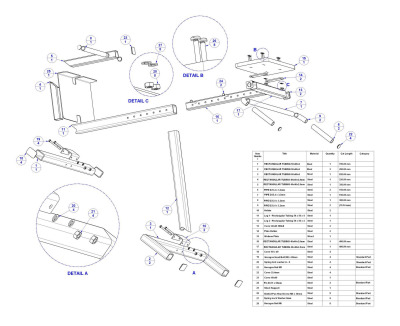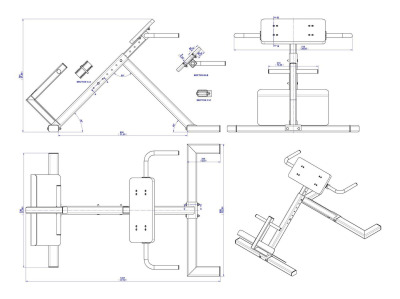Here you are offered a plan for building a back extension bench (also called the hyperextension bench or Roman chair).
The complete construction is metal, only the front support (upper pad - Part 15) is made of wood. The front support should be padded, and the footrest (Part 8) can be upholstered with a cylindrically-shaped sponge. The back extension bench is one of the best devices meant for lower back exercises that belong to core training. This is the incline version with a 45-degree slope.

W 820mm (32.28'') x L 1207mm (47.52) x H 701mm (27.6'')
Variations:A hyperextension exercise can be performed by lying face down on the floor and then lifting the arms and the torso off of the ground while keeping the hips and lower body even and grounded. This movement stretches muscles in the lower back.
Target muscles: The exercise is aimed at developing and strengthening the middle and lower back. It works the erector spinae (iliocostalis lumborum, longissimus thoracis and spinalis) muscles the most, and slightly helps to develop the gluteus maximus, adductor magnus and hamstring muscles.


Guide:
- Lie face down on a Back extension bench. Adjust the upper pad to be at crotch height so that you can bend without any restriction.
- When the adjustment is made, start using the device. Lean the back of your leg on part 8. Cross your arms in front of you (behind your head). This will be your starting position. You can also hold a weight plate for extra resistance in front of you under your crossed arms.
- Start bending forward at the waist as far as you can while keeping your back flat. When bending, breathe in. Never round the back as you perform this exercise. The main thing is that you go as far as your body allows you to without rounding the back.
- Slowly raise your torso back to the initial position. In this movement, exhale.
- Repeat the exercise a number of times. Practice this exercise at the end of your workouts, so that your back muscles do not get tired during more complex exercises.